Directions (1-5): Given table provides salary (in Rs), expenditure (on Education Fee & Travelling) & savings as percentage of total salary details of 5 different person. Some data are missing which you have to calculate as per instructions provided in questions. Read the data carefully & answer the following questions.
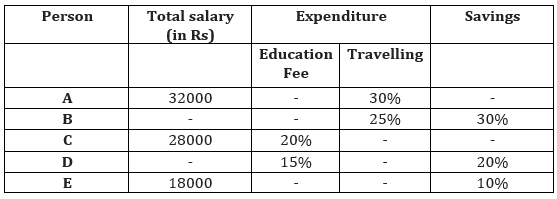
Q1. If ratio of total amount of expenditure (Education Fee and Travelling) to the total amount of savings of person C is 5: 3, then find the total amount spent on Travelling is how much more than total savings of person C?
(a) Rs. 1800
(b) Rs. 1600
(c) Rs. 1400
(d) Rs. 2000
(e) Rs. 1200
Q2. If salary of person B is 44% more than the salary of C, then what is the ratio of total amount spent on Education Fee by both the person C and B together to the total amount of savings by both person C and B together? (Use data from Q1.)
(a) 815: 848
(b) 848: 807
(c) 807: 848
(d) 848: 815
(e) 265: 243
Q3. The ratio of amount spent on Education Fee to the amount of savings by person A is 4: 3 and total amount spent on Travelling by Person B and A is same, then what is the total amount spent on Education Fee by both person A and B together? (In Rs)
(a) 29800
(b) 26400
(c) 28800
(d) 31280
(e) 30080
Q4. Total salary of person D is equal to the average salary of person A and C together, then difference between total amount spent on Travelling and total amount of savings by person D is approximately what percent more/less than the total amount spent on Education Fee by person C?
(a) 140%
(b) 145%
(c) 135%
(d) 130%
(e) 150%
Q5. Find the respective ratio of the total amount spent by Person A on Travelling to the average of total amount spent by Person E on Education Fee and Travelling together?
(a) 25: 31
(b)27: 32
(c) 32: 27
(d) 25: 34
(e) 34: 25
Directions (6–10): Given line graph shows the data of difference between marked price & cost price and difference between selling price & marked price of 4 different items sold by a dealer.
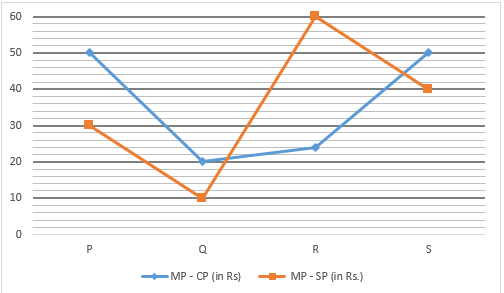
(NOTE: On each article dealer definitely earned some profit or loss)
Profit = Selling Price (SP) – Cost Price (CP);
Loss = Cost Price – Selling Price
Discount = Marked Price (MP) – Selling Price (SP)
Q6. On how many articles loss is incurred?
(a) 1
(b) 2
(c) Cannot be determined
(d) 3
(e) 4
Q7. If CP of article R is equal to SP of article P, then find difference between marked price of P & R?
(a) 30
(b) 26
(c) 4
(d) 8
(e) 6
Q8. On article Q, 12.5% profit is earned. If profit percentage on article Q is equal to discount (%) given on article P, then marked price of P is what percent more/less than that of Q?
(a) 73%
(b) 90%
(c) 58.33%
(d) 140%
(e) 175%
Q9. The ratio of cost price of S to marked price of R is 3: 2 and if 60% discount is offered on R, then what is the difference between selling price of R & S?
(a) Rs 90
(b) Rs 74
(c) Rs 120
(d) Rs 46
(e) Rs 84
Q10. The cost price of S is 100% more than that of R and on S 2.5% profit is earned. If he sells ‘X’ article of R and ‘3X – 8’ articles of S then total loss incurred in this transaction is equal to cost price of 1 unit of article R. How many total units of R & S were sold by the shopkeeper?
(a) 62
(b) 72
(c) 52
(d) 32
(e) 42
Solutions
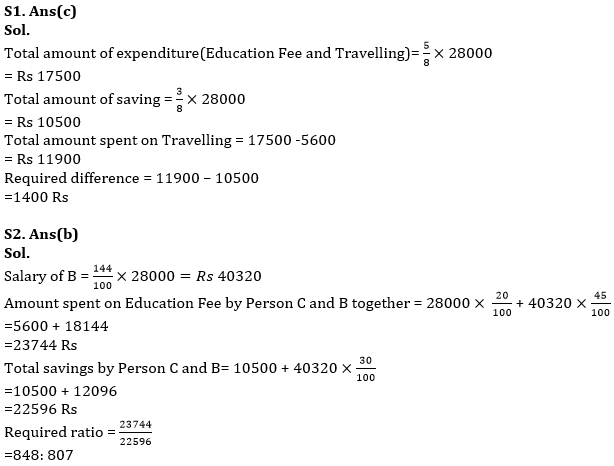
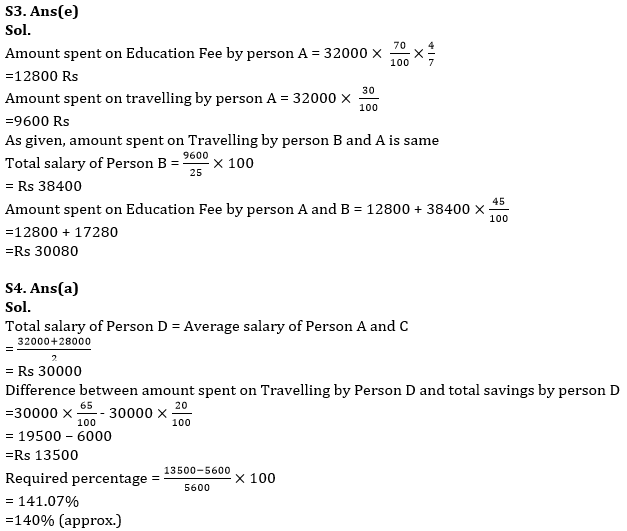
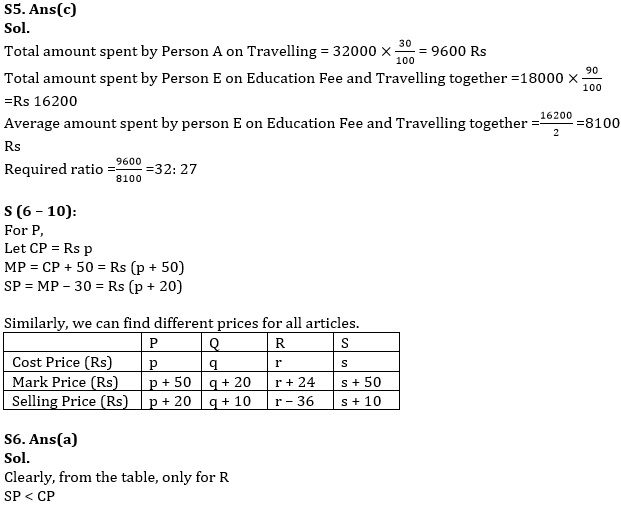
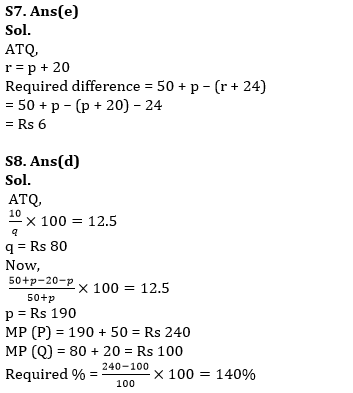
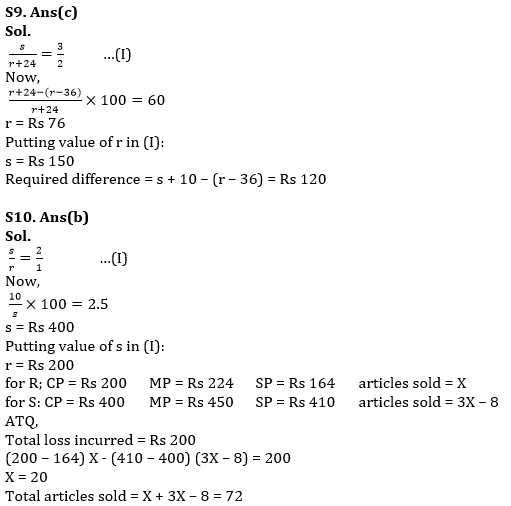



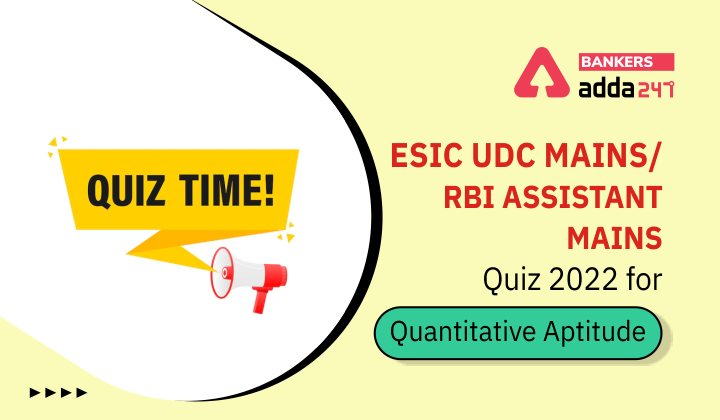

 GA Capsule for SBI Clerk Mains 2025, Dow...
GA Capsule for SBI Clerk Mains 2025, Dow...
 The Hindu Review October 2022: Download ...
The Hindu Review October 2022: Download ...
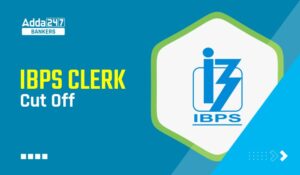 IBPS Clerk Mains Cut Off 2025, Check Sta...
IBPS Clerk Mains Cut Off 2025, Check Sta...







